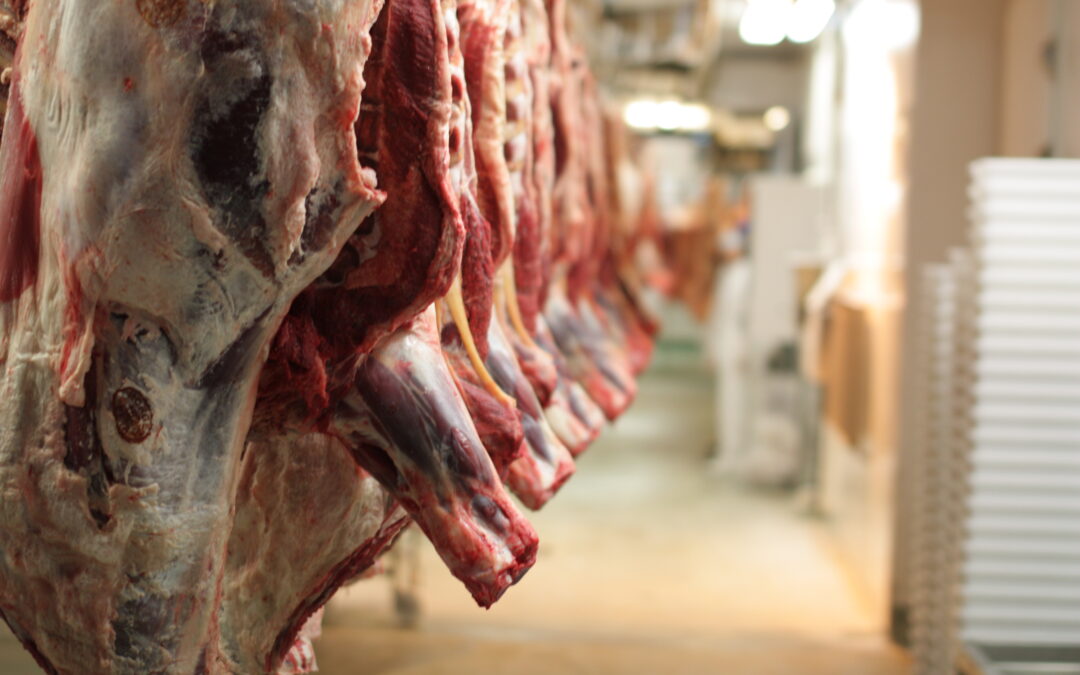By Anna Rzhevkina
Over the last decade, Poland has become a major producer of kosher and halal meat. Yet, with its tiny Jewish and Muslim communities, only a small fraction of that meat serves the domestic market, with the rest sold abroad.
Overall, Poland exported just under €5 billion worth of meat in 2020, the fourth highest of any European Union member state. And almost one third of those exports were of kosher and halal products, making Poland one of Europe’s biggest suppliers of such meat.
Yet in recent years that lucrative trade has come under political threat, with the ruling Law and Justice (PiS) party – and in particular its powerful chairman Jarosław Kaczyński – pushing an animal-protection law that would, among other things, ban ritual slaughter.
That legislation has twice been shelved following opposition within PiS itself, marking rare defeats for Kaczyński and highlighting the size, strength and lobbying power of the meat industry. Yet producers remain concerned that they could again come under threat.
A high-margin export
Representatives of the industry say interest in kosher and halal meat from Poland is growing thanks to its high quality and Poland’s proximity to the countries where there is a demand for it. The president of the Polish Association of Beef Cattle Breeders and Producers (PZPBM), Jacek Zarzecki, estimates that about 30% of Polish meat export is halal and kosher.
“Poland, as one of the biggest beef producers in the European Union, responds not only to European consumers that need beef slaughtered in line with religious requirements, but also to those outside Europe,” he told Notes from Poland. In addition to the major export destinations for the ritually slaughtered meat up till now, such as Germany, France, Spain, the UK, and Israel, he said there was growing interest from the United Arab Emirates.
In response to the proposed restriction on ritual slaughter (which would still allow it for domestic religious communities) Poland's chief rabbi says that it "is the most humane form of slaughter" and "anyone who says otherwise has bad information" https://t.co/UraRHlj0NK
— Notes from Poland 🇵🇱 (@notesfrompoland) September 17, 2020
Poland exported 6.7 billion zloty (about €1.5 billion) of beef in 2019, out of which 2.2 billion zloty came from ritual slaughter, says Mateusz Fornowski, an analyst at the Polityka Insight think tank, citing data from Poland’s main veterinary authority (GIW).
That share is even larger for poultry exports, around half of which are kosher or halal, according to National Poultry Council spokesperson Cezary Mleczek-Połoczański.
Halal and kosher are attractive for Polish meat producers because of high margins and profits from international trade. But strict certification requirements and political uncertainty reserve this segment of the market for big farming companies, which can afford to deal with changing regulations.
To ban or not to ban
The greatest uncertainty in recent years has been the threat of a ban on ritual slaughter as part of animal-rights legislation. This bars stunning of an animal before slaughter, which takes place through a cut to the throat after which it bleeds out – a practice which critics say is cruel.
Wojciech Pisula, a psychology professor at the Polish Academy of Sciences (PAN), says that “slaughter carried out without prior stunning is associated with extreme suffering for the animal. The agonising suffering of bleeding cows (whose physical expression is suppressed by immobilisation and cutting the vocal cords) continues even up to three minutes”.
"British Veterinary Association calls for all animals to be effectively stunned before slaughter." Halal does not do this. @ComputerChick0https://t.co/PqckOHGcZC
— David Atherton (@DaveAtherton20) November 9, 2021
Jewish and Muslim communities, however, argue that stunning does not work painlessly either. “People don’t understand what the process of Jewish religious slaughter is and they don’t understand how the non-kosher method sometimes objectively is even more painful to the animals,” Poland’s chief rabbi, Michael Schudrich, told Notes from Poland.
Himself a long-time vegetarian, Schudrich says that Kaczyński should ban all slaughter if he wants to prevent the suffering of animals.
Asked whether he would accept a middle ground, whereby religious slaughter would be permitted but only to serve the needs of the local community and not for export, Schudrich rejects the idea. “If only religious slaughter cannot be exported then it is stating that something is wrong with it, there is something worse about it than regular slaughter. That’s not true,” he argues.
Kosher and halal meat is a major export industry for Polish farmers, some of whom have been protesting against the proposed new animal protection law https://t.co/oBm0H9be6L
— Notes from Poland 🇵🇱 (@notesfrompoland) October 2, 2020
Zarzecki of the PZPBM says that when their throats are cut, animals quickly lose consciousness due to the drop in blood pressure. “It is like we sometimes hurt a finger with a piece of paper, and we don’t feel this pain,” he explains.
Most EU members generally allow a religious exception to the rule that animals should be stunned before slaughter, but a number of countries, including Denmark, Sweden, and Slovenia, do not. In Poland, the practices of Jewish shechita and Muslim dhabiha slaughter were banned in 2012 after the constitutional court ruled that animals needed to first be stunned. However, in 2014, the same court overturned that ban after a case brought by the Union of Jewish Communities argued that it unconstitutionally restricted religious practice.
After a change in government in 2015 brought PiS to power, Kaczyński began to push for a new animal protection law, even appearing in a video for animal rights group Viva to promote the idea in 2017. Meat industry lobbying and internal opposition within PiS forced him to back down, but the issue returned to the agenda in 2020, when Kaczyński presented his so-called “Piątka dla zwierząt” (“Five for animals”).
That package proposed measures to protect animal rights, including a ban on breeding animals for fur (another large Polish export industry), stricter requirements on living conditions of animals, and restrictions on ritual slaughter.
The legislation caused widespread protests from farmers and meat producers. It also once again divided the ruling camp, with a rebellion against the bill leading some figures to talk of an end to the governing coalition (though that never transpired).
President Andrzej Duda, normally a PiS ally, also came out strongly against the proposals, which he said undermined the interests of the agriculture industry. Marek Sawicki, an MP, estimated that the law would reduce Polish meat exports by 20 billion zloty annually. Schudrich, the chief rabbi, also criticised the bill, declaring that “ritual slaughter is the most humane form of slaughter”.
The bill was supposed to be amended, but was eventually abandoned, with agriculture minister Henryk Kowalczyk confirming in October last year that it would not return. He had earlier said that the only part that was difficult for him to accept was the limiting of ritual slaughter.
Resistant to the pandemic
The Halal Verif association, a French NGO that issues halal labels, in late 2020 forecast that the European halal meat market was growing 20% annually. Considering halal meat’s large shares in the total meat export structure, it is likely that Poland has supplied much of the growing volume.
With the proposed ban on ritual slaughter now shelved, Poland’s meat industry is eager to continue catering to that growing demand. The disruption of the pandemic and outbreaks of bird flu and African swine fever have hurt the industry. But, although domestic demand for meat is relatively low in Poland, export volumes and value should increase in the coming years, says Fornowski of Polityka Insight.
Yet, just as Kaczyński’s animal protection bill suddenly returned to the agenda in 2020 after being abandoned in 2017, there remains the prospect of another push to ban or restrict ritual slight. Such a move also has strong support in The Left (Lewica), Poland’s second largest opposition group, and backing in some parts of Civic Coalition (KO), the largest.
However, the scale of farmers’ protests and the strength of industry lobbying in 2020 showed that it would take a brave government to push for similar legislation in future.
Main image credit: Thomas Bjørkan/Wikimedia Commons (under CC BY-SA 3.0)





















